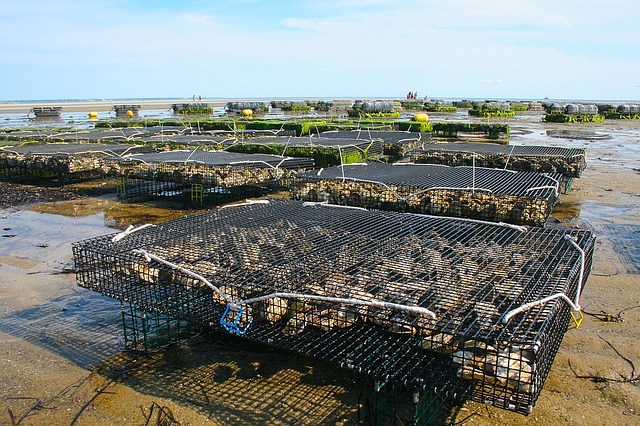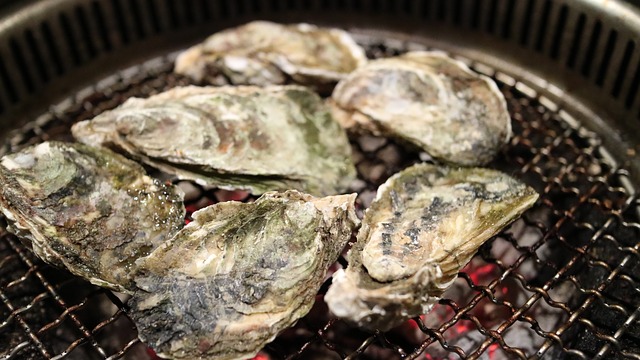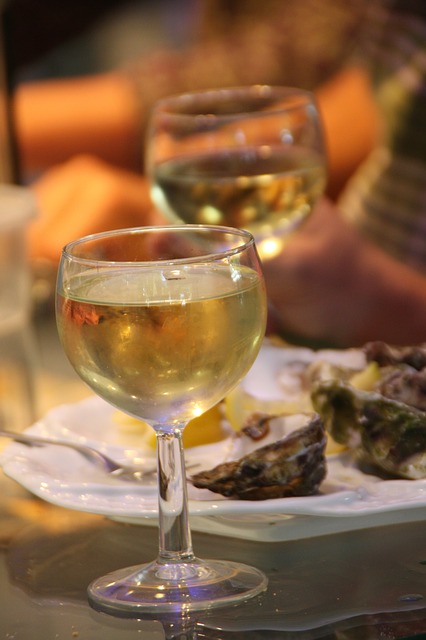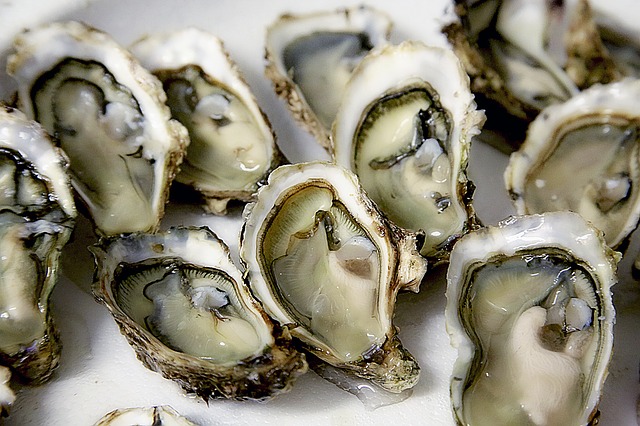The magnificent oyster small in size but rules the cuisine world as the indulgent pleasure. For a connoisseur, similar to coveting the experience of wine tasting, sampling diverse oysters will develop a palate to distinguish an exceptional oyster from the ordinary. The optimal way to appreciate this shellfish is eating as close to the time it is pulled fresh from the sea, still living and surrounded by its flavorful seawater.

The adage of only eating oysters in months that end in “r” is not necessarily true with current growing techniques, since farms have ways to regulate year-round cold waters harvesting and bacteria monitoring. The “r” month rule is more about the breeding cycle meaning oysters thrive in cold water, grow“fatter”, and taste better during the colder months than the warmer months of May, June, July, and August.
There are hundreds of varieties of oysters around the world which could be broken down into five main regions.
· Atlantic Oysters – Native to America and found all along the Atlantic Ocean down to the Gulf
of Mexico
· Olympia Oysters – Native to the American West Coast, found mostly in Washington State and
Northern California
· Pacific Oysters – Found in North America on the West Coast and British Columbia
· Kumamoto Oysters – Native to Japan, found in the same locales as the Pacific Oysters

In North America there are four major farming regions that include:
· West Coast – Primarily Northern California, Washington and British Columbia
· The Gulf – Louisiana, Alabama, Texas, Florida
· Virginia
· New England – Massachusettes, Main, Cape Cod, Prince Edward Island
Globally, the following farming regions or harvesters either own restaurants or source their oysters to local restaurants. Or, as Boat International (a superyacht publication) advises that your chef may order from local shops to be delivered to the yacht for meal preparation while docked in that particular region.
· Bluff Oysters in the town Bluff located in southern New Zealand
· International renowned family-owned sourcing company, Maison Gillardeau cultivate
Gillardeau Spéciale Oysters in La Rochelle, France described as “oysters brought in with a
ladle of seawater from France”
· Delta de L’Ebre, Catalonia Spain
· Sydney Rock Oysters in Australia
· Family run business, Kelly Oysters Galway Bay, Ireland
· Ostrea edulis oysters harvested in Loch Ryan, Scotland
· Matunuck Oysters are farmed in Potter Pond, an aquaculture farm in East Matunuck, Rhode
Island and served at the “Pond to Plate”, Matunuck Oyster Bar

The most popular preference of consuming oysters is to eat raw on the half shell with some of the briny flavored liquid in the shell. Experts advise when the scent of fresh oysters prior to eating should smell fresh just like the ocean.
Traditionalists will eat raw oysters, prepared on a half shell with no dressing at all or a few drops of lemon juice to boost the brightness of the meat. In addition, taking a few bites into the meat before swallowing will release the oyster’s sweetness. A blogger chef described the chewing experience that can be compared to eating a fig.
Other condiments used to enhance the experience for some, are cocktail sauce, vinegar, butter, and salt, hot sauce, horseradish, or prepared with a cream roux, or mignonette sauce.

Certain spirits pair well with oysters depending on where the oysters were harvested. Most popular selections include Sparkling wines or champagne, Chablis, Muscadet and other dry white wines, Absinthe, Sake and in the beer category – Guinness and other stouts
Oysters are versatile and are served smoked, fried, baked in the shell, boiled, steamed, roasted, canned, pickled or in complex rich dishes such as Oysters Rockefeller.
Unique Destinations for Experiencing Oysters
- Island Creek Oysters in Duxbury Massachusetts
- Louisiana is known for offering a sweeter and meatier oyster and eating destinations to sample the South’s variety would include: Acme Oyster House (raved for their chargrilled oysters) or Felix’s Restaurant and Oyster Bar which is famously known for divine oysters
- Le Marathon Des Châteaux du Médoc – If combining running, eating, and sampling wine piques your interest as a bucket-list destination than this event would be more than satisfying. The 26.2 mile Le Marathon du Médoc is a rather contradictory, yet fun French Marathon created in 1985 held every September with a course designed through the Médoc vineyards in Bordeaux, France. So the connection to oysters, you ask? The race is distributed with fun activities that include local musical bands, 23 wine sample stops, an oyster tasting break and a steak-eating break. Participants’ have to be born before 1999 and submit a medical certificate and, by the way, wear a costume. Spectators are certainly welcomed to be an observer if the combination of drinking and eating while running a marathon seems a bit over the top.

Annual Oyster Festivals Listings
Why not plan an oyster themed getaway to a part of the world where this particular seashell is celebrated annually. Most festivals depending on the locale, typically include shucking competitions, oyster eating competitions, perhaps coincide with impressive music festivals, celebrity chefs cooking demonstrations and VIP events providing separate wining and dining areas.
- Oyster Obsession. Com – lists the 2019-2020 season of Festival and Events in North America
- BuckiTDream – 9 best oyster festivals in the world
- The Healthy Fish – 5 additional seafood festivals where the oyster has a starring role. – AJ

Share your thoughts in the comment section below or on Twitter!
Our appreciation goes to the following sites that provided the content!
Thrillist – How to Eat Oysters
Boat International.com – Where to Enjoy the World’s Best Oysters
Prince Edward Island International Shellfish Festivalhttps://peishellfish.com/en/
Oyster Obsession Oyster Festivals & Events
Hat Tip to the following photographers who provided the scrumptious photographs:
Yung-pin Pao – oysters on a platter
Patricia Alexandre – oysters on platter
Yung-pin Pao smoked oysters
Mike Potenza – oyster farm
Heinrich Hess – wine and oysters
Didier aires – tractor carrying oysters
Marin33 – arcachon basin in France
SHARE POST
Customer Favorites


























